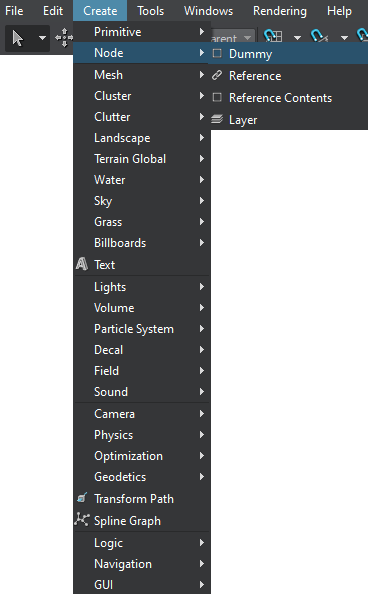Node Dummy
A ![]() Node Dummy is a zero-sized node that has no visual representation. It is used to organize the other nodes into a hierarchy. Usually Node Dummy serves as a parent node for a group of nodes of the same type. Node Dummy, though invisible, has the same common options as other nodes: it can be transformed (moved, rotated or scaled) and have a property assigned.
Node Dummy is a zero-sized node that has no visual representation. It is used to organize the other nodes into a hierarchy. Usually Node Dummy serves as a parent node for a group of nodes of the same type. Node Dummy, though invisible, has the same common options as other nodes: it can be transformed (moved, rotated or scaled) and have a property assigned.
Notice
Node Dummy differs from the Dummy Object: you cannot assign physical properties to Node Dummy.
See also#
- The NodeDummy class to edit Node Dummy via API
Creating a Node Dummy#
To add a Node Dummy to the scene via UnigineEditor do the following:
- Run UnigineEditor.
- On the Menu bar, click Create -> Node -> Dummy.

- Place the Node Dummy somewhere in the world.

Notice
Node Dummy is created automatically when grouping the selected nodes.
Organizing Nodes Hierarchy#
See how to Organize Nodes via UnigineEditor.
Last update:
2021-12-13
Help improve this article
Was this article helpful?
(or select a word/phrase and press Ctrl+Enter)